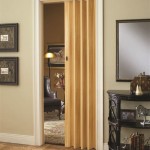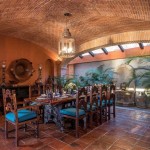Styles Of Interior Design: Essential Aspects
The world of interior design is vast and multifaceted, encompassing a wide range of styles that cater to diverse tastes and preferences. Understanding the intricacies of different design styles is fundamental to transforming a space into a reflection of one's personality and aspirations. Here are some essential aspects of popular interior design styles that will empower you to make informed choices and create a space that truly inspires you.
Traditional: The traditional style embodies elegance and grandeur, characterized by timeless pieces and ornate detailing. Its essence lies in the preservation of classic forms and meticulous craftsmanship. Think rich fabrics, opulent furnishings, antique accents, and intricate architectural features that evoke a sense of history and sophistication. Symmetry and balance are key, with furnishings meticulously arranged to create a harmonious and inviting ambiance.
Modern: Modern design embraces clean lines, simplicity, and functionality. It originated in the early 20th century as a reactie to the ornate and excessive styles of the past. Modern interiors prioritize open floor plans, neutral color palettes, sleek furnishings, and the integration of natural materials such as wood, metal, and glass. The emphasis is on creating a minimalist, uncluttered, and visually calming space.
Contemporary: Contemporary design is an ever-evolving style that reflects the aesthetics of the present moment. It encompasses a blend of modern and traditional elements, constantly adapting to incorporate new trends and technologies. Contemporary interiors are characterized by bold geometric shapes, vibrant colors, eclectic accents, and a focus on sustainable and eco-friendly materials. The goal is to create a space that is both stylish and functional, reflecting the homeowner's individuality.
Scandinavian: Scandinavian design is renowned for its simplicity, functionality, and natural aesthetic. It originated in the Nordic countries and is heavily influenced by the region's harsh climate and long winter nights. Scandinavian interiors prioritize natural light, cozy textures, and warm, earthy tones. Furnishings are typically crafted from natural materials like wood and leather, with a strong emphasis on clean lines and simplicity.
Bohemian: Bohemian design exudes an eclectic, carefree, and artistic spirit. It is a celebration of individuality and self-expression, characterized by a mix of patterns, colors, and textures. Bohemian interiors often feature vintage and ethnic pieces, handmade crafts, and unique artifacts collected from around the globe. The goal is to create a space that is warm, inviting, and reflective of the owner's passions and travels.
Mid-Century Modern: Mid-century modern design emerged in the 1950s and 1960s as a blend of modern and retro aesthetics. It is characterized by clean lines, organic forms, and a focus on functionality. Mid-century modern interiors feature iconic furnishings from designers like Charles and Ray Eames, Arne Jacobsen, and George Nelson. The color palette often includes muted tones and bold pops of color, creating a sophisticated and timeless look.
Industrial: Industrial design is inspired by the aesthetics of factories and warehouses. It embraces raw materials, exposed structural elements, and a utilitarian approach to design. Industrial interiors often feature exposed brick walls, concrete floors, metal accents, and vintage industrial lighting. The color palette is typically neutral, with pops of color added through accessories or artwork.
Transitional: Transitional design is a harmonious blend of traditional and modern styles. It combines the elegance of classic design with the sleekness of contemporary aesthetics. Transitional interiors feature a neutral color palette, classic furnishings with modern accents, and a mix of traditional and contemporary artwork. The goal is to create a space that is both stylish and timeless, appealing to a wide range of tastes.
Coastal: Coastal design evokes the relaxed and breezy atmosphere of seaside living. It is characterized by a light and airy aesthetic, with a focus on natural materials such as wood, stone, and rattan. Coastal interiors often feature soft, neutral colors, coastal-inspired patterns, and furnishings made from natural fibers. The goal is to create a space that is both inviting and reminiscent of the beach.
French Country: French country design is inspired by the rustic charm of the French countryside. It is characterized by warm, earthy tones, natural materials, and a mix of antique and modern furnishings. French country interiors often feature distressed finishes, floral patterns, and vintage accents. The goal is to create a space that is cozy, inviting, and reminiscent of a cozy cottage in the French countryside.

40 Interior Design Styles Defined

21 Most Popular Types Of Interior Design Styles In 2024 Foyr

Interior Design Styles At A Glance Designteacher

Interior Design Styles 101 The Ultimate Guide To Decorating In 2024 Decorilla

7 Most Popular Types Of Interior Design Styles In 2024 Beautiful Homes

Types Of Interior Design Styles Modern Minimalist Eps

Eight Stylish Options For An Interior Design Upgrade To Your Home

Interior Design Styles 101 The Ultimate Guide To Decorating In 2024 Decorilla

Contemporary Interior Design Style All You Need To Know Beautiful Homes

How To Transition Between Interior Design Styles On A Budget








